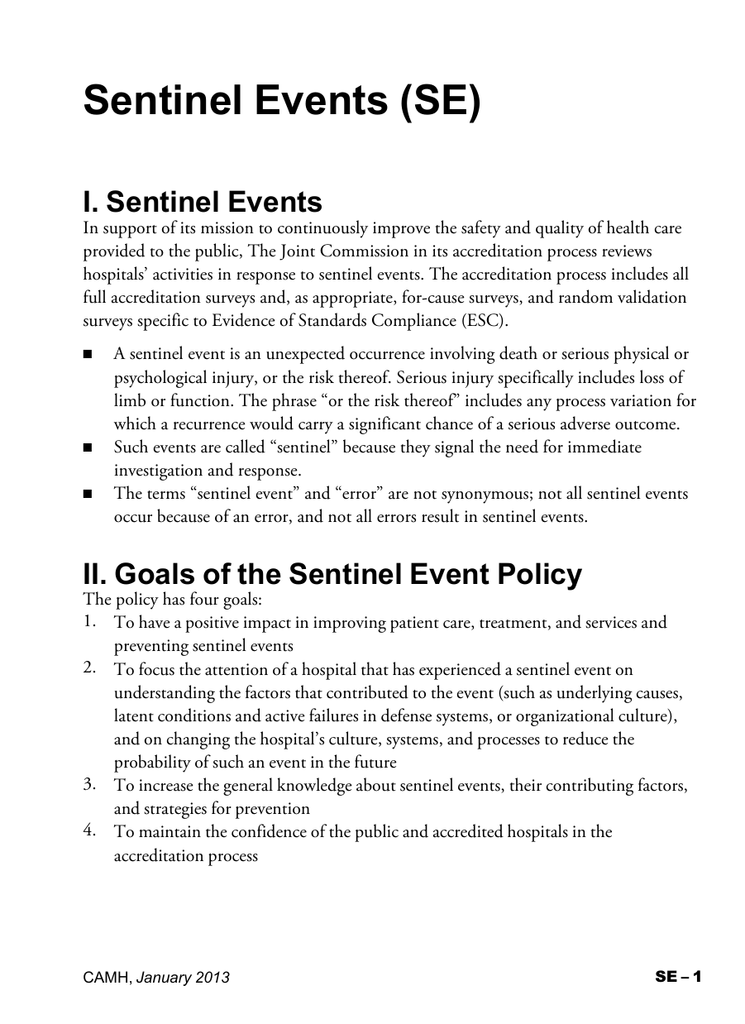
Other hospitals and organizations can learn from the Joint Commission’s sentinel event database. The lessons learned from the sentinel event increase the awareness of the potential sentinel events, root causes, and strategies for prevention.The advantages of reporting the sentinel event include: Reporting a sentinel event to the Joint Commission is voluntary.

Reporting a Sentinel Event to the Joint Commission The Joint Commission’s website provides resources on sentinel events, statistics, webinars, and quick safety tips. The de-identified data helps in general awareness and dissemination of error prevention strategies to all hospitals. The Joint Commission collects and analyzes the data from the sentinel events reviewed and reported by the organizations. Maintain trust of the public, staff, and hospitals that patient safety is a topmost priority.Enhance the general awareness and disseminate the learnings about patient sentinel events, root factors, and mitigation strategies.Analyze the root causes that contributed to the sentinel event (cultural, latent, and active failures), and develop strong, actionable plans.Improve patient care and prevent such safety events in the future.It partners with the hospitals that have experienced a sentinel event in the investigation, analysis, and development of corrective action plans. In 1996, the Joint Commission instituted a formal sentinel event policy. Establish a timeline for the implementation of corrective actionsĪll healthcare organizations should have a policy for responding to a sentinel event.Strong corrective actions to eliminate the root cause and prevent similar future events.Root cause analysis (RCA) for identifying the causal and contributory factors.Notification to the hospital leadership.Provide support for the family and staff involved.Disclose the event to the patient and family.Hemolytic transfusion reactions due to major blood group incompatibilities are still reported with an incidence of 7-9 per year.Īn appropriate response to a sentinel event may include the following: Fortunately, infant discharge to the wrong family has been reduced to zero. The risk of suicide is the highest immediately following hospitalization, during the inpatient stay, or immediately post-discharge. They are followed by suicide, delay in treatment, and medication errors. The most common sentinel events are wrong-site surgery, foreign body retention, and falls. More than three-fourths of them are voluntarily reported to the agency. The great majority occur in a medical/surgical hospital setting, followed by psychiatric hospitals (including psychiatric units and clinics) and emergency departments. Sentinel events occur in every healthcare setting. Since 2007, about 800 sentinel events are reported to the Joint Commission every year according to their summary data of sentinel events.

All accredited hospitals are encouraged but not obligated to report to the Joint Commission every sentinel event. The hospital must review all sentinel events.


The term sentinel refers to a system issue that may result in similar events in the future. The event can result in death, permanent harm, or severe, temporary harm. The Joint Commission defines a sentinel event as an unexpected occurrence involving death, serious physical or psychological injury.


 0 kommentar(er)
0 kommentar(er)
